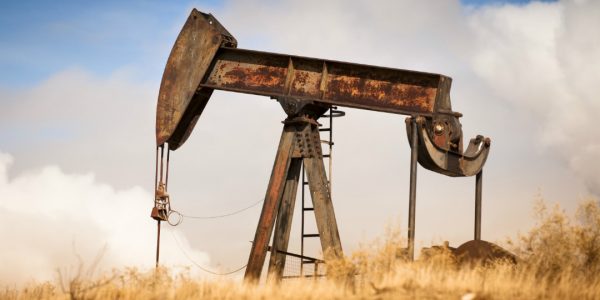The likelihood of a commodities supercycle is really on the radar of our users now, and this is a theme with many moving parts to understand. Here is an overview of its key nuances and what the implications might be for your investments.
Few investors will have missed all the talk of a coming commodities “supercycle”. How to prepare is certainly coming up increasingly in our conversations with users.
Commodities are a highly esoteric – and diverse – area too, so all the better if your personal adviser can draw on extensive in-house expertise
The likelihood of a commodities supercycle is a complex area; still more what all this means for portfolios. As ever, you should discuss developments with an adviser who knows your holdings and financial situation in depth. Commodities are a highly esoteric – and diverse – area too, so all the better if your personal adviser can draw on extensive in-house expertise.
However, it is useful to prepare for these conversations with an understanding of the key issues and we hope this primer will be useful for managed clients and DIY investors alike. These are common questions:
What is a commodities supercycle, and how often do they come?
This is when the price of commodities boom over an extended period. The commodities asset class is highly diverse, covering “soft” commodities that are grown or reared (like coffee, wheat and livestock) and “hard” commodities that are mined (like oil and metals). This likely supercycle is very much about hard commodities.
There have only been four commodities supercycles in the past century, hence the excitement we’re seeing
There have only been four commodities supercycles in the past century, hence the excitement we’re seeing. The last one of the early noughties was fuelled by the rapid growth of the BRIC economies of Brazil, Russia, India and China, and in particular the latter’s immense demand for natural resources to fuel its infrastructure drive. An imbalance between supply and demand went on for the best part of a decade, ratcheting commodity prices up and up.
What are the signs that a supercycle is coming?
Although analysts have been pointing to supercycle conditions since the end of 2020, the signs are really striking now. Confidence about future demand has made several commodities markets soar: cobalt and nickel have bounced back to pre-pandemic highs, while copper and iron have hit prices last seen a decade ago.
Confidence about future demand has made several commodities markets soar: cobalt and nickel have bounced back to pre-pandemic highs, while copper and iron have hit prices last seen a decade ago
We all remember the shock when crude prices slipped into negative territory for the first time ever in April last year as global demand plummeted. Now oil has recovered to pre-COVID levels too.
What are the drivers?
There are several interlinked drivers for a potential fifth supercycle, and it remains to be seen how they will play out. The headline factors are:
Post-pandemic demand: Lives, and economies, have been on hold for a year now and when restrictions are eased many predict an unleashing of demand the likes of which the world has never seen.
Dollar weakness: Commodities are mainly priced in US dollars and so the greenback’s recent fall in value has boosted the prices of commodities.
Economic stimulus plans: Aware that austerity is politically poisonous, governments are putting huge economic stimulus plans in place, with the US leading the way with a $1.9 trillion package. Much of the focus will be on job creation through infrastructure investments and fostering domestic resilience in case of further pandemics. However, the green agenda dominates.
The green agenda: Renewable energy is the overarching theme of stimulus packages, with the UK, US, Europe and China leading a global charge to cut fossil fuels and pivot towards solar panels, wind farms and electric cars. These technologies rely on commodities like cobalt, nickel, copper and “rare earths” and electricity storage calls for huge changes to infrastructure too.

Top Tip
It may be relatively easy to research stocks and bonds for yourself, but commodities are an area that really does warrant expert advice. There are many ways to express a view that could turbocharge your returns, but just as many ways things could go wrong. I certainly take expert guidance on this asset class and if you want to too, why not let us set up some meetings fast and free?

Lee Goggin
Co-Founder
Does this mean the death of oil?
In the longer term, almost certainly yes. However, paradoxically there might be a big boom in fossil fuels in the shorter term.
Though decarbonisation is the target, we have a long way to go in the transition to electric cars (let alone planes) and all the other changes tabled for how we live. It is also ironically the case that the mining of materials needed for green energy initiatives will have to be powered by fossil fuels in the main. Strange to say, but green deals are likely to put rocket fuel under oil demand.
Strange to say, but green deals are likely to put rocket fuel under oil demand
At the same time, energy and mining firms have been letting production and investment into oil decline as part of their green agendas (and as institutional investors divest fossil fuels too). This means that a serious deficit has built up of around a tenth of global production. Further, this can’t be met by US fracking as the best deposits have been largely used up.
The world is likely to be very thirsty for oil for some time and, if OPEC countries run out of spare capacity, we could see prices double or even triple – an event which would prove a huge shock to the global economy
The world is likely to be very thirsty for oil for some time and, if OPEC countries run out of spare capacity, we could see prices double or even triple – an event which would prove a huge shock to the global economy.
Investors also need to be aware how desperate oil-producing countries will be to keep oil prices at a reasonable level to extend the predominance of oil a decade or so further and not drive the world into green energy before they have been able to reposition their economies. $100 a barrel is generally seen as this tipping point.
The picture around oil is particularly complex.
How certain is all this, and what does it mean for my portfolio?
A general commodities supercycle is certainly not assured. The green revolution may falter, or at least not happen as fast as hoped. People may just opt to keep repairing petrol cars rather than swap to expensive EVs, for instance. Nor is the hoped for rapid and simultaneous global economic rebound guaranteed. Mass unemployment remains a real threat.
Although ploughing headlong into commodities at the expense of stocks and bonds may be unwise, experts are noting that commodities can be a good hedge against inflation (an increasing worry) as they are pretty well correlated. Also, commodities’ inverse correlation with traditional assets can act as a portfolio stabiliser for any volatility ahead. A desire for enhanced diversification and returns has been upping allocations to alternatives for many years now.
Feeling the call of commodities?
In summary, investors should certainly be paying attention to what looks like a commodities supercycle on the horizon. But they should not be seduced by overly simplistic messages that could make their portfolios dangerously imbalanced. Commodities can be highly volatile and complexities of their markets particularly challenging – which is why even professional advisers will consult with their firm’s specialist analysts on this front.
As ever, maximising the opportunities open to you while also minimising downside risks is the order of the day. This overview is likely to have sparked many questions in relation to your portfolio and financial plans, so why not let us arrange no-obligation discussions with a few experts to make sure you are in the best possible place?





